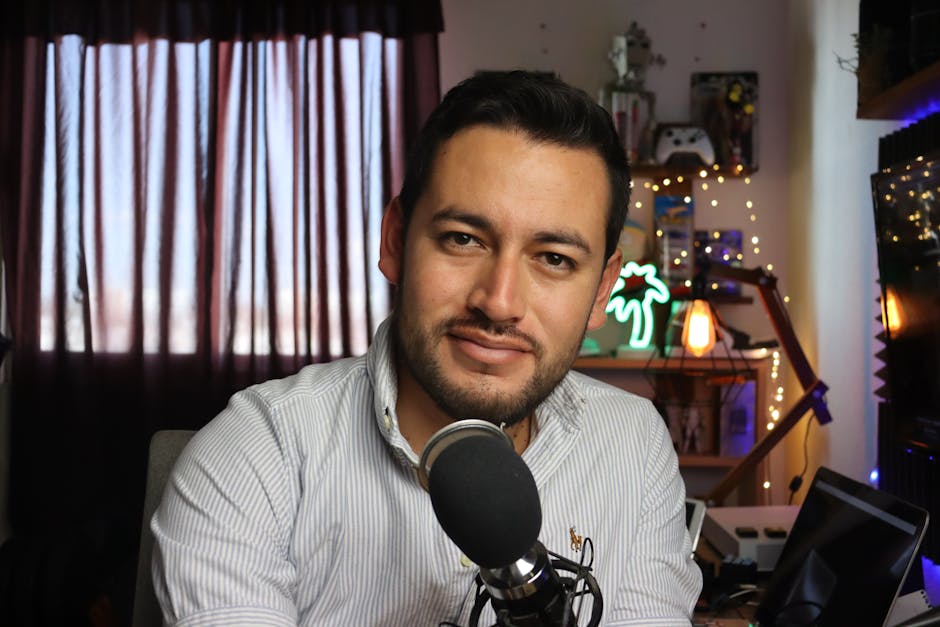How I Use Video Snippets to Promote My Podcast on Social Media.
How I Use Video Snippets to Promote My Podcast on Social Media
For years, I wrestled with the challenge of getting my podcast discovered. It felt like I was pouring my heart and soul into each episode, only for it to disappear into the vast ocean of audio content. Traditional promotion methods yielded incremental gains, but I craved a breakthrough. That’s when I started experimenting with video snippets – short, engaging clips from my episodes designed specifically for social media. What began as a cautious foray has transformed into the cornerstone of my podcast promotion strategy, consistently driving new listeners and fostering a more vibrant community. This isn’t about creating full video podcasts; it’s about strategically repurposing the best moments of my audio into visual gold. Let me walk you through my exact process, sharing the insights and techniques I’ve refined over time.
My Initial Spark: Why I Turned to Visuals for Audio Growth
The podcast landscape is undeniably crowded. While audio-only platforms are essential for loyal listeners, the truth is, most people spend a significant chunk of their online time on visually-driven social media platforms like Instagram, TikTok, Facebook, and YouTube. I realized I was missing a massive opportunity by not meeting potential listeners where they already were. My “aha!” moment came when I observed how much engagement short, punchy video content received compared to static images or text posts.
I understood that an audio clip, no matter how profound, often gets lost in a scroll. But an audiogram – a visual representation of sound waves with text overlays and branding – or a short video clip of me speaking, immediately commands attention. It’s about stopping the scroll. People are more likely to pause, read, listen for a few seconds, and potentially click through if there’s a compelling visual element. This realization sparked a fundamental shift in my promotional mindset: my podcast wasn’t just audio; it was a source of valuable content that could be repackaged for maximum impact across different mediums.
The core benefit I quickly discovered was the ability to convey the *essence* of an episode in under 60 seconds. This bite-sized approach lowers the barrier to entry for new listeners. Instead of asking them to commit to a 30-minute episode, I’m inviting them to a quick, intriguing preview. This strategy has proven invaluable for showcasing my personality, the podcast’s unique value proposition, and the quality of my content without demanding a huge time investment upfront. It’s an appetizer for the main course, and it consistently leaves potential listeners wanting more.
My Playbook: Selecting the Perfect Snippet That Hooks Listeners
Identifying the right moments from a full-length podcast episode to transform into a captivating video snippet is more art than science, but I’ve developed a systematic approach. My goal isn’t just to pick *any* interesting soundbite; it’s to select one that acts as a powerful, self-contained hook, compelling enough to make someone seek out the full episode. This is where my “playbook” comes into effect.
Hunting for Gold: Moments That Resonate
As I edit my podcast episodes, I’m always listening with a dual purpose: crafting the best possible audio experience and simultaneously identifying potential snippet material. I look for:
- “Mic Drop” Moments: These are powerful statements, surprising revelations, or profound insights that stand alone and make you think.
- Emotional Peaks: A particularly funny joke, a heartfelt confession, a moment of strong disagreement, or an inspiring declaration. Emotion is highly shareable.
- Actionable Advice: If my podcast offers practical tips, I’ll extract a concise piece of advice that listeners can immediately grasp and apply.
- Intriguing Questions: Posing a thought-provoking question that the episode then answers can create immediate curiosity.
- Controversial Opinions: These can spark discussion and engagement, drawing people into the conversation.
I often mark these timestamps during the initial editing phase. I aim for snippets that are typically 30-90 seconds long, ensuring they are long enough to convey value but short enough to retain attention on fast-paced social feeds. Sometimes, a particularly strong point might be slightly longer, but I always prioritize conciseness.
The “Click-Through” Test: Does it Lead to More?
Once I’ve identified a few potential snippets, I apply what I call the “click-through” test. I ask myself: “If someone hears just this snippet, will they feel compelled to listen to the rest of the episode?” If the snippet gives away *too much* or feels complete on its own, it might not drive listeners to the full show. Conversely, if it’s too vague, it won’t pique interest. The sweet spot is a snippet that offers significant value or intrigue but leaves an unresolved question or a desire for more context.
I also consider the platform. A snippet destined for TikTok or Instagram Reels might be more visually dynamic and fast-paced, possibly even featuring a quick on-screen text question. A snippet for LinkedIn might be more thought-provoking and professional. This initial selection process is critical because even the best editing can’t save a weak snippet choice. It’s the foundation upon which all subsequent promotion builds.
My Hands-On Approach: Crafting Engaging Video Clips for Each Platform
Once I have my chosen audio segment, the real work of transforming it into a social media-ready video begins. This isn’t a one-size-fits-all process; each platform has its nuances, and my approach adapts accordingly. My goal is always to maximize visual appeal and clarity while staying true to my brand.
The Tools I Rely On and My Workflow
I primarily use a combination of tools for this:
- Descript: This has been a game-changer. Descript allows me to edit audio and video by editing text. I can quickly remove filler words, tighten up sentences, and even generate captions automatically. For snippets where I want to show myself speaking, I can record a video layer alongside my audio, making the editing incredibly efficient. Descript for editing video and audio handles transcription and allows me to export video with captions baked in, which is crucial for accessibility and silent viewing.
- Headliner App: For audiograms (waveform animations over a static image or background video), Headliner for creating audiograms is my go-to. It’s intuitive, offers various waveform styles, and allows me to add custom backgrounds, progress bars, and animations.
- Canva: For creating custom graphics, branding elements, and ensuring my snippets have a consistent visual identity.
Tailoring the Visuals for Specific Social Platforms
This is where the platform-specific optimization comes in:
- Instagram Reels & TikTok (Vertical Video): These platforms demand vertical video (9:16 aspect ratio). I’ll either use a snippet of myself speaking directly to the camera (if I recorded video during the podcast) or create an audiogram with dynamic text overlays. Key elements here are fast cuts, engaging on-screen text, and often trending audio (if appropriate for the snippet’s tone). I ensure my branding (logo, podcast name) is visible but not intrusive. The first 3-5 seconds are critical to grab attention.
- YouTube Shorts (Vertical Video): Similar to Reels/TikTok, but with an emphasis on discoverability through relevant keywords in the description and hashtags. I often reuse my Reels content here, ensuring the title and description are optimized for YouTube’s search algorithm. YouTube Shorts best practices emphasize quick, engaging content.
- Facebook & LinkedIn (Square or Horizontal Video): While vertical video is gaining traction everywhere, traditional square (1:1) or horizontal (16:9) formats still perform well on these platforms, especially if the snippet includes graphics or a static background. On LinkedIn, I focus on professional insights or thought-provoking questions, ensuring the text overlays are clear and concise. Facebook allows for slightly longer captions, so I can add more context.
- Twitter (Any Aspect Ratio, but Shorter): Twitter is all about brevity. My snippets here are usually shorter (15-30 seconds) and highly impactful. I often pair them with a strong, concise tweet that includes a direct link to the episode.
Crucially, I always include captions. A vast majority of




Post Comment